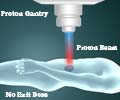
‘Novel diagnostic tool developed may result in better cancer treatment that is hard to diagnose.’
Tweet it Now
"We believe that the analytical methods described have rather direct implications that can help patients who lack a correct diagnosis of cancer," says Jonas Nilsson, professor of experimental cancer surgery and director of the Sahlgrenska Cancer Center.The patient came to Sahlgrenska University Hospital with lung cancer that had recurred several times, despite various treatments in the hospital. The disease proved fatal, but the patient contributed several biopsies for research before dying.
The key to a correct diagnosis, in this case, turned out to be ascertaining and defining the tumor's character and origin in detail, which did not correlate with the clinical picture. To achieve this required a large number of analyses before and after the patient's death.
The extensive analytical work offered many surprises. One of them was a rapid growth of the tumor when a biopsy was introduced under the skin of mice. Another analysis showed that this did not involve a traditional type of lung cancer, but rather a neuroendocrine (hormone-producing) cancer. The tumor also proved to have an unexpected mutation in a specific cancer gene called BRAF.
"What is most remarkable about this finding was that it meant the patient could be treated with what is called BRAF inhibitors, which were effective and also led to a shrinkage of the patient's tumor," Jonas Nilsson says. "The patient's tumor in the mouse also grew more slowly when the mouse was treated with BRAF inhibitors. But unfortunately the tumor recurred after half a year, and the patient died."
Advertisement
"When ultraviolet rays from the sun strike skin cells, a very characteristic mutational pattern occurs with the repair of ultraviolet-induced DNA damage. All biopsies from the patient we analyzed had this pattern," he says.
Advertisement
The value of applying many different advanced and modern analyses to more complicated tumors to provide proper treatment is underscored by Joakim and the other two lead authors, Roger Olofsson Bagge, a surgeon, and Akif Demir, a pathologist, at Sahlgrenska University Hospital.
Many treatments are approved by the Medical Products Agency Sweden for a certain diagnosis, but not for other. Correction of a diagnosis can, therefore, result in different and more appropriate treatment for the patient with complex cancer.
Source-Eurekalert














